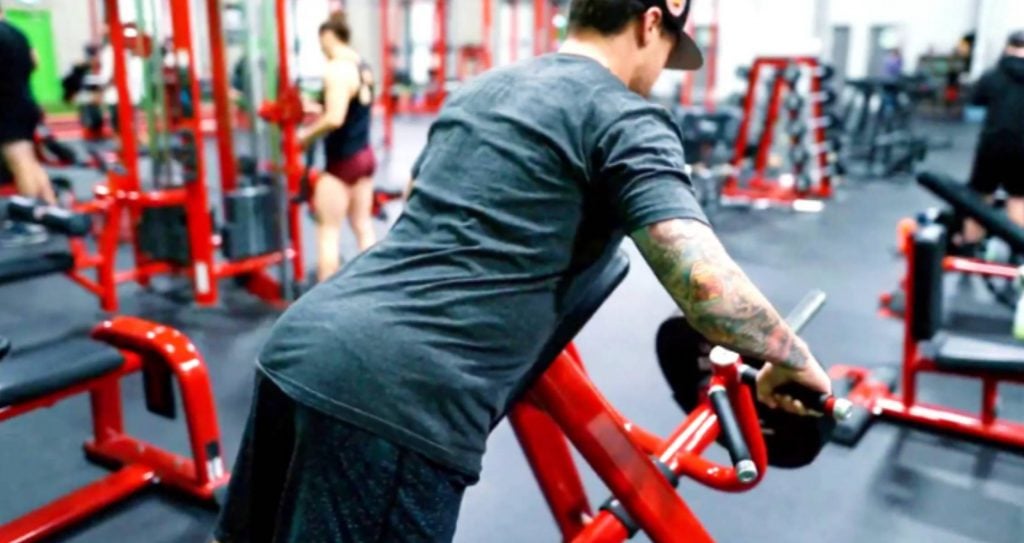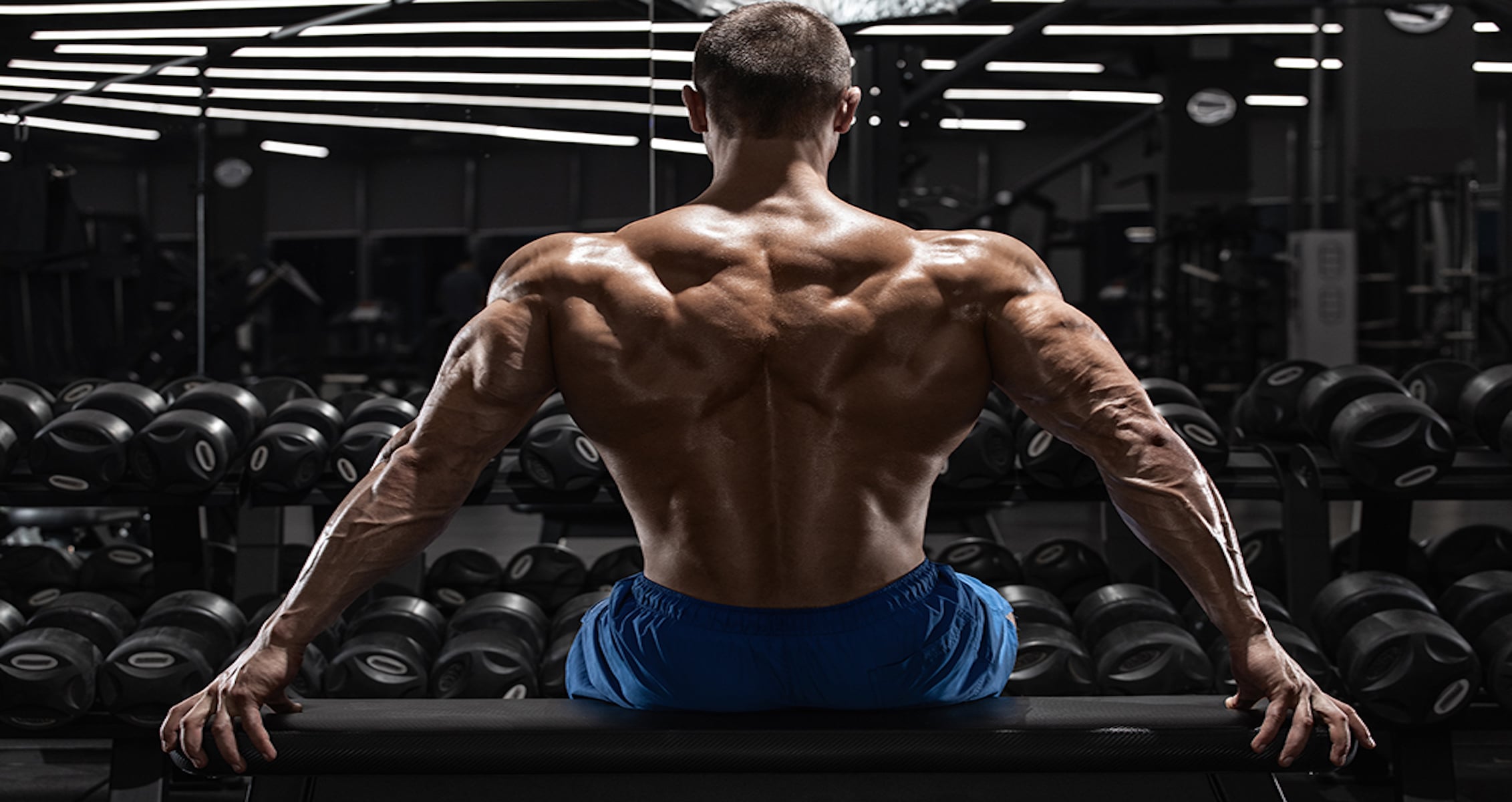Learn how to do the chest supported T-Bar row to build a monstrous back.
A strong and muscular back will enhance your physique to be more functional and aesthetically pleasing. And rowing exercises are some of the best movements to build your back. There are many rowing movements you can do. For example, the chest supported T-Bar row is a great rowing alternative to the classic T-Bar row that goes from the floor up, a favorite of Arnold Schwarzenegger (7x Mr. Olympia Champion) to build a muscular back. This version of the T-Bar row hits the same muscles as the classic one, but gives you more support and stability.
This blog post will dive deep into this movement and why it’s so effective in adding muscle to your upper body’s posterior muscles. You’ll learn how to do them, their benefits, and some alternative exercises.
Chest Supported T-Bar Row Technique and Muscles Worked
The chest supported T-Bar row is a compound (multi-joint) machine movement that targets the muscles in your back — latissiumus dorsi, scapula, rear deltoid, and trapezius muscles. And like other pulling movements, you’ll target your biceps as a secondary muscle. Since it’s performed on a machine while lying your chest on padding, you won’t be able to “cheat” during reps as you would on a T-Bar row, where you can use momentum to pull the weight from the ground. But, again, your legs give you extra support.
How to Do the Chest Supported T-Bar Row
- Place your feet on the platform, lay your chest on the padding, and grasp the handles with a pronated — palms facing down — grip. Your legs should be slightly bent, and your head should look down.
- Pull the load towards your chest as high as possible with extended arms.
- Pause and squeeze your scapula together, make sure you have a good mind-muscle connection to really get the blood flowing and ensure a good pump.
- Slowly extend your arms back to the starting position.
- Repeat.
*Note: Don’t let the weight drop from your hands back to the bottom after you row the weight up. Bring it down in a controlled manner by extending your elbows.
Benefits of the Exercise
Here are some benefits of incorporating chest supported t-bar row into your training plan.
More Muscular and Strong Back
This exercise will build a more robust and muscular back. It’s a compound movement that recruits various muscles in your back. It’ll also improve your strength on other compound movements that require a strong back, such as deadlifts.
Better Posture
Rowing movements will help correct your posture and prevent your shoulders from protracting. In addition, having a good posture will help you stand taller and improve your V-taper — shoulder-to-hip ratio, which is a vital sign of an aesthetic physique.
Fix Muscular Imbalances
If you train your chest muscles more than your back, then you’ll create muscular imbalances and your body will not be symmetrical. Not only are imbalances aesthetically displeasing, but muscular imbalances can actually lead to injury and build you a disproportional physique. Although many people love to train their chest and shoulder muscles, you must train your back muscles, too, to protect your shoulders and chest from injury. Therefore, rowing movements are essential to add to your training plan.
Proper Technique
Since the chest supported T-Bar row is completed on a machine, it’ll ensure you’re using the proper form. Free weight rowing movement alternatives, such as barbell bent-over row and T-bar row, will put you at risk of injury and not engaging your back muscles properly. That’s because it’s easy to use a jerking motion to pull up heavy weight. During rows, you must keep your torso as stable as possible to get your back muscles to grow and keep you safe. And the chest supported T-Bar row makes that happen.
Stronger Biceps
The chest supported T-bar row works your biceps as a secondary muscle. So on top of a more robust and muscular chest, you can expect to increase your biceps musculature and strength.
V-Taper
A strong V-taper will significantly enhance your physique’s aesthetics. It’s the “V” your body creates from your shoulders to your waist. And the smaller your waist and broader your torso is, the better your V-taper will be. And building a muscular back — along with boulder shoulders — is one of the critical steps to getting that sought-after V-shape.
Chest Supported T-Bar Row Alternatives
There are other rowing variations you can do that are similar to the chest supported T-bar row but slightly different.
T-Bar Row
The T-bar row is the free weight version of the chest supported t-bar row. It targets the same muscles. And since it doesn’t give you as much support and stability, it’ll increase your core and stabilizer strength. Although, you should be wary of swaying too much on this exercise to pull the load — that’ll increase your chance of injury and take the tension off your back muscles.
Barbell Bent-Over Row
This is another similar movement. The grip is identical to the chest-supported T-bar row in this exercise compared to the T-Bar row, which uses a narrower grip on a standard barbell. It’s wider, engaging more of your back muscles and outer lats and less of your biceps, inner lats, and rhomboids.
Pendlay Row
The Pendlay row is another compound rowing alternative. Named after the late Glenn Pendlay, this movement is similar to the barbell-bent over row, except it has you hinged over more to where your torso is parallel to the ground. And rather than rowing the barbell towards your hips/naval — as you would on barbell bent-over row — you pull the weight towards your chest.
Smith Machine Bent-Over Row
The smith machine row is the machine version of the barbell bent-over row. But as the name implies, it’s performed on a smith machine. Doing a bent-over row on a smith machine will allow you to use heavy weight to target your back and let you do it more controlled and safer. The machine forces you to pull the weight in the same trajectory while remaining stable.
Seal Row
The seal row is a free weight version of the chest supported T-Bar row. It requires a barbell and a bench. So although it isn’t a machine movement, it’ll still give you more stability than other free weight rowing variations since it requires the anterior portion of your torso to lie flat on a bench.
FAQs
Here are a couple of frequently asked questions (FAQs) to consider before attempting the chest supported T-bar row.
What does chest supported T-bar rows work?
The chest supported T-bar row engages the muscles in your back, including your lats and scapula.
What is the difference between the T-bar row and chest supported T-bar row?
These movements are similar, except the T-bar row is a free weight variation performed with a barbell. And the chest supported T-bar row is done on a machine with a wider grip.
Wrap Up
Overall, the chest supported t-bar row is an exercise that can truly help to build the back muscles and craft an overall great physique. That being said, is this movement in your training routine? Do you prefer any other back movements over this one? Let us know!
Follow us on Instagram, Facebook, and Twitter for more workout guides!









